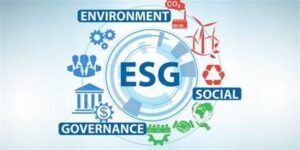Last week, the U.S. Department of the Treasury and Internal Revenue Service (IRS) released guidance on the Sustainable Aviation Fuel (SAF) Credit established by the Inflation Reduction Act (IRA).
Per the press release from Treasury, “…Sustainable aviation fuel is a key part of the Biden-Harris Administration’s efforts to transition the American economy to a clean energy future and rebuild the middle class from the bottom up to the middle out in rural America,” said U.S. Secretary of Agriculture Tom Vilsack. “Today’s announcement is an important stepping stone as it acknowledges the important role farmers can play in lowering greenhouse gas emissions and begins to reward them through that contribution in the production of new fuels. This is a great beginning as we develop new markets for sustainable aviation fuel that use home grown agricultural crops produced using climate smart agricultural practices. USDA will continue to work with our federal agency partners to expand opportunities in the future for climate smart agriculture in producing sustainable aviation fuel.”
“The guidance released today reflects the latest data and science needed to help create new economic opportunities for America’s agricultural sector,” said U.S. Secretary of Energy Jennifer M. Granholm. “This interagency effort will help our climate goals take flight with cheaper, cleaner sustainable aviation fuel — ensuring America maintains an innovative edge on the global clean technology stage.”
The Treasury Department’s guidance provides important clarity around eligibility for the SAF Credit. The credit incentivizes the production of SAF that achieves a lifecycle greenhouse gas emissions reduction of at least 50% as compared with petroleum-based jet fuel. Producers of SAF are eligible for a tax credit of $1.25 to $1.75 per gallon. SAF that achieves a GHG emissions reduction of 50% is eligible for the $1.25 credit per gallon amount, and SAF that achieves a GHG emissions reduction of more than 50% is eligible for an additional $0.01 per gallon for each percentage point the reduction exceeds 50%, up to $0.50 per gallon.
As part of the released guidance, the agencies comprising the SAF Interagency Working Group (IWG) jointly announced the “40B SAF-GREET 2024″ model. This model provides another methodology for SAF producers to determine the lifecycle GHG emissions rates of their production for the purposes of the SAF Credit.
The modified version of GREET incorporates new data, including updated modeling of key feedstocks and processes used in aviation fuel and indirect emissions. The modified GREET model also attempts to integrate key greenhouse gas emission reduction strategies such as carbon capture and storage, renewable natural gas, and renewable electricity.
The Notice incorporates a USDA pilot program to encourage the use of certain Climate Smart Agriculture (CSA) practices for SAF feedstocks. Incorporating CSA practices into the production of SAF will likely lower overall GHG emissions associated with SAF production and increase adoption of farming practices that are associated with other environmental benefits, such as improved water quality and soil health.
For corn ethanol-to-jet, the pilot provides a greenhouse gas reduction credit if a “bundle” of certain CSA practices (no-till, cover crop, and enhanced efficiency fertilizer) are used. It similarly would allow a greenhouse gas reduction credit for soybean-to-jet if the soybean feedstock is produced using a “bundle” of applicable CSA practices (no-till and cover crop). Per the announcement, this is a pilot program specific to the 40B credit, which is in effect for 2023 and 2024.
To credit CSA practices in the Clean Fuel Production Credit (45Z), which becomes available in 2025, the agencies have committed to do further work on modeling, data, and assumptions, as well as verification. Lastly, a new 45Z-GREET will be developed for use with the 45Z tax credit.
Green Spouts: The focus on SAF and aviation fuel by the Administration and relevant agencies continues. The new rules enable ethanol and soy-based biofuel to be eligible for tax credits under the IRA. Biorefineries can qualify for tax credits if their fuel is sourced from corn and soy farms that use certain “climate-smart” conservation practices. SAF is a large part of the airline industries’ plans to reduce GHG emissions. Per the EPA, only 24.5 Million gallons of SAF were consumed in the US in 2023, leaving close to 3 Billion gallons a year more of additional production and consumption to meet the Administration’s 2030 domestic goal for SAF.
Aviation emissions (mostly from fuel sources) account for approximately 2% of global energy-related carbon dioxide emissions (or about 800 million metric tons of CO2. The aviation industry is responsible for approximately 12% of CO2 emissions from all transportation.
Duane Morris has an active ESG and Sustainability Team to help organizations and individuals plan, respond to, and execute on your Sustainability and ESG planning and initiatives. For more information, please contact Brad A. Molotsky, David Amerikaner, Joseph West, Sharon Caffrey, Sheila Rafferty-Wiggins, Alice Shanahan, Jeff Hamera, Nanette Heide, Joel Ephross, Jolie-Anne Ansley, Robert Montejo or the attorney in the firm with whom you are regularly in contact.

